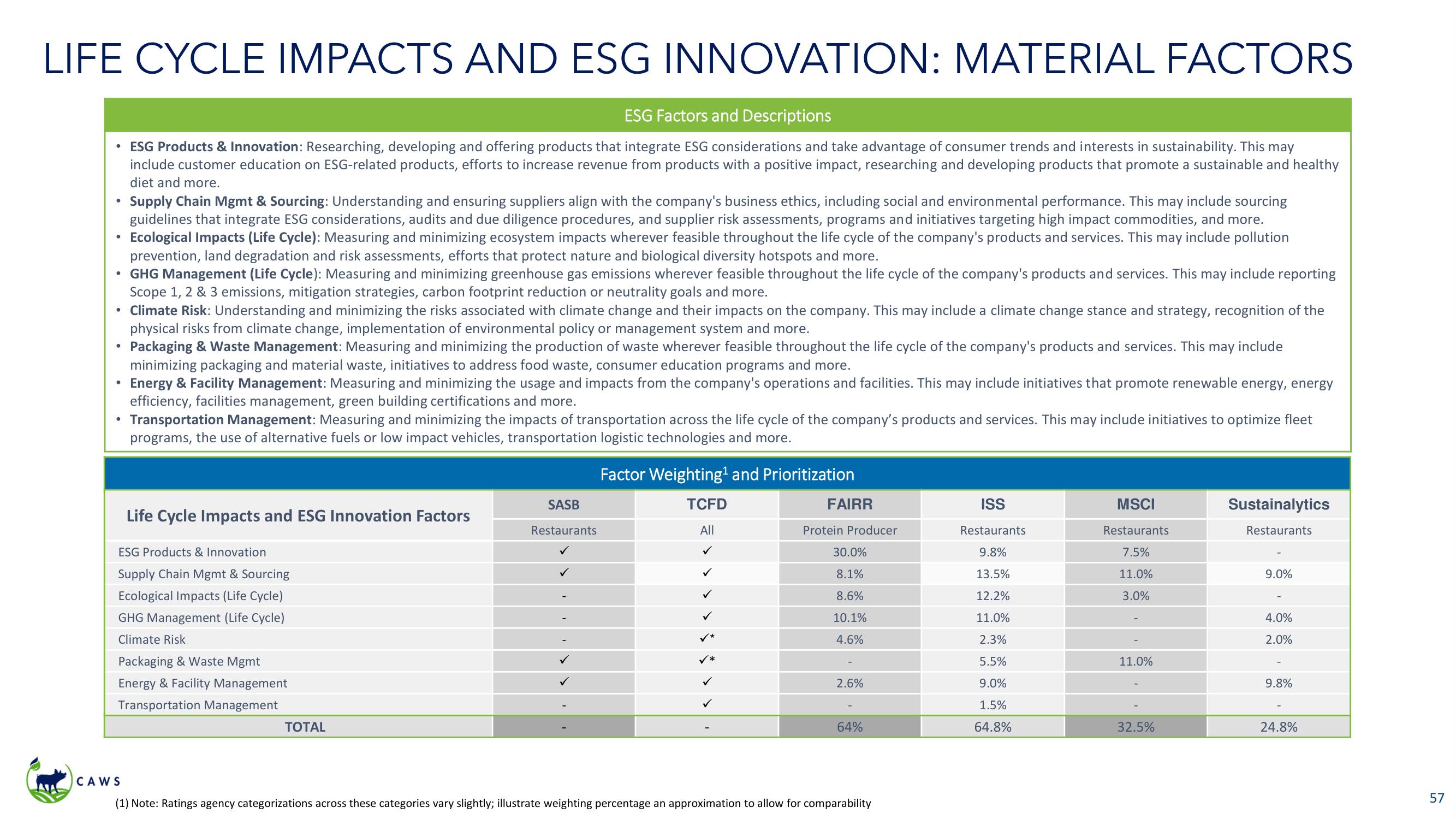Icahn Enterprises Activist Presentation Deck
LIFE CYCLE IMPACTS AND ESG INNOVATION: MATERIAL FACTORS
ESG Factors and Descriptions
• ESG Products & Innovation: Researching, developing and offering products that integrate ESG considerations and take advantage of consumer trends and interests in sustainability. This may
include customer education on ESG-related products, efforts to increase revenue from products with a positive impact, researching and developing products that promote a sustainable and healthy
diet and more.
• Supply Chain Mgmt & Sourcing: Understanding and ensuring suppliers align with the company's business ethics, including social and environmental performance. This may include sourcing
guidelines that integrate ESG considerations, audits and due diligence procedures, and supplier risk assessments, programs and initiatives targeting high impact commodities, and more.
Ecological Impacts (Life Cycle): Measuring and minimizing ecosystem impacts wherever feasible throughout the life cycle of the company's products and services. This may include pollution
prevention, land degradation and risk assessments, efforts that protect nature and biological diversity hotspots and more.
• GHG Management (Life Cycle): Measuring and minimizing greenhouse gas emissions wherever feasible throughout the life cycle of the company's products and services. This may include reporting
Scope 1, 2 & 3 emissions, mitigation strategies, carbon footprint reduction or neutrality goals and more.
• Climate Risk: Understanding and minimizing the risks associated with climate change and their impacts on the company. This may include a climate change stance and strategy, recognition of the
physical risks from climate change, implementation of environmental policy or management system and more.
• Packaging & Waste Management: Measuring and minimizing the production of waste wherever feasible throughout the life cycle of the company's products and services. This may include
minimizing packaging and material waste, initiatives to address food waste, consumer education programs and more.
Energy & Facility Management: Measuring and minimizing the usage and impacts from the company's operations and facilities. This may include initiatives that promote renewable energy, energy
efficiency, facilities management, green building certifications and more.
Transportation Management: Measuring and minimizing the impacts of transportation across the life cycle of the company's products and services. This may include initiatives to optimize fleet
programs, the use of alternative fuels or low impact vehicles, transportation logistic technologies and more.
Factor Weighting¹ and Prioritization
TCFD
All
✓
●
Life Cycle Impacts and ESG Innovation Factors
ESG Products & Innovation
Supply Chain Mgmt & Sourcing
Ecological Impacts (Life Cycle)
GHG Management (Life Cycle)
Climate Risk
Packaging & Waste Mgmt
Energy & Facility Management
Transportation Management
CAWS
TOTAL
SASB
Restaurants
FAIRR
Protein Producer
30.0%
8.1%
8.6%
10.1%
4.6%
2.6%
64%
(1) Note: Ratings agency categorizations across these categories vary slightly; illustrate weighting percentage an approximation to allow for comparability
ISS
Restaurants
9.8%
13.5%
12.2%
11.0%
2.3%
5.5%
9.0%
1.5%
64.8%
MSCI
Restaurants
7.5%
11.0%
3.0%
11.0%
32.5%
Sustainalytics
Restaurants
9.0%
4.0%
2.0%
9.8%
24.8%
57View entire presentation